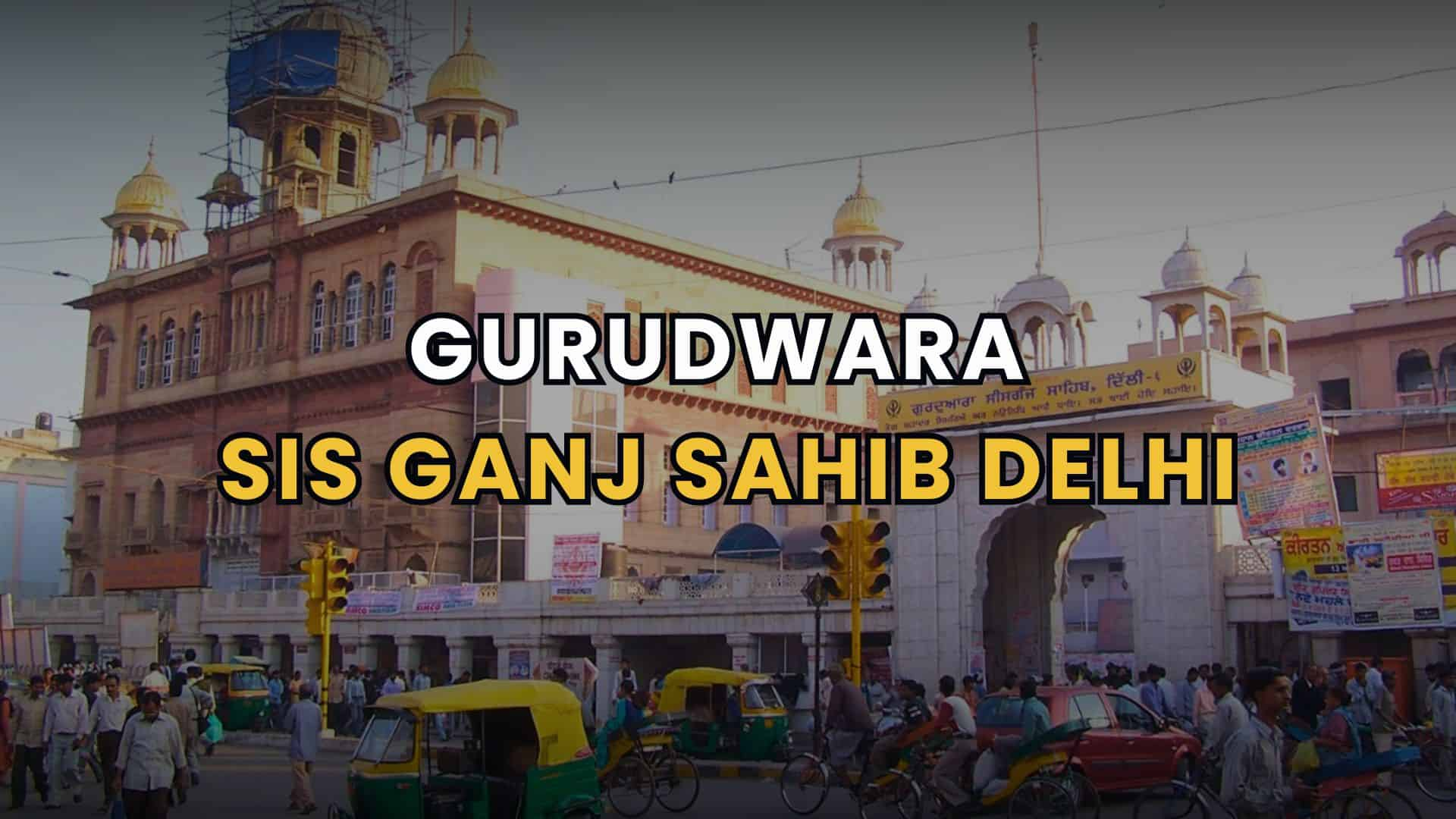Bangla Sahib Gurudwara Delhi
Historical and Cultural Significance
History
Bangla Sahib Gurudwara Delhi is one of the large Sikh temples originally it was a house of Raja Jai Singh who was a great general of Mughal Empire. Originally built as a bungalow, the house is popular as ‘Bangla’, as the eighth Guru of Sikhism Guru Har Krishan Sahib, resided in it during his visit to Delhi in 1664. The epitome of compassion, during his stay, Guru Har Krishan Sahib collected water from the well here which was used to relieve people from suffering from smallpox and cholera. The occasion that was marked by such a compassionate and service delivery is remembered by the Gurudwara making it a unique and significant site.
Cultural Importance
One of the holiest places of worship for the Sikhs, the Gurudwara Bangla Sahib is a favorite destination for sightseers and worshippers alike, with a footfall of over thousands each day. It represents the Sikh teaching of simplicity, service, and respect for all beings. It serves as a very special reminder of the history and culture of the Sikhs.
Suggested Tour: Panj Takht Tour
Dress Code and Etiquette (Bangla Sahib Gurudwara Delhi)
Modest Clothing
Upon reaching Gurudwara Bangla Sahib, there is a dress code that has to be followed which involves them being decent. Both the sexes must avoid bare shoulders and legs. Socially, women are advised to stop wearing short skirts, shorts, and sleeveless tops. The conservative dress code is an effort to show respect toward the holy place.
Head Covering
There are certain sections where men and women are supposed to cover their heads as a mark of respect. Tissues and scarves are usually offered to clients at the entrance if they do not have any of them on them. It is also very typical to see people putting a scarf on their head before getting into the temple area.
Removing Shoes
As for the etiquette, people are required to take their shoes off before getting inside the Gurudwara. That is the place where visitors can drop their shoes and feel free to walk around barefoot if they like. This practice depicts a cultural way of demonstrating that one is poor, or is giving up worldly things before getting to the holy land.
Seva and Langar
Seva (Service)
Performing Seva refers to the act of volunteering or giving back without any expectations of reward, and it plays an important role in Sikhism. Seva activities include serving food and helping with washing up, and visitors are encouraged to join in with these tasks. Participating in Seva is empowering and an enriching experience that captures the Sikh concept of respect for human dignity and volunteerism.
Langar (Community Kitchen)
Any Gurudwara is incomplete without Langar, a meal prepared by the local volunteers and offered to everyone, irrespective of the color and caste. In Bangladesh, the Langar is always open, which prepares and serves plain food but good for health for people at large. Sit and share the food together on the ground is one of the worst methods that speaks volume about the equality that Sikhs believe in. People are free to come and join; and even help in the preparation and serving of foods so as to experience the hallmark of the fellowship – service.
Suggested Tour: Hemkund Sahib Tour
Holy Sarovar (Bangla Sahib Gurudwara Delhi)
Sarovar
Some of the major features of the Gurudwara complex are a vast water tank known as Sarovar, located in front of the main entrance. The water in the sarovar is holy water; people often bathe in the water or even throw the water on their bodies as a way of purifying themselves. The arch of the ‘Sarovar’ captures the essence of purification and is a beautiful plaza of prayer and contemplation.
Cleanliness
It is important that the Sarovar should be very holy and very clean. The following are general guidelines that visitors to the area are obliged to adhere to: There will be no littering. Sarovar is also a holy place and thus the bathing should be done with the due respect which is paid to the image or idol.
Photography
Restrictions
Besides this, the use of cameras and taking photographs is permitted in other parts of the Gurudwara, but is prohibited inside the main hall of the worship because the atmosphere of the premises should be kept as sacred and serene as possible. In the event of photographing people, especially children and families, always look for signs indicating restrictions on this and follow the rules set down by the Gurudwara administration.
Timings and Best Time to Visit (Bangla Sahib Gurudwara Delhi)
Open 24/7
Although a very active religious place, Bangla Sahib Gurudwara Delhi is always open, at any time of the day or night and at any time of the year. This accessibility enables one to come at ones own convenience.
Best Time to Visit
When making the tour, one may wish to walk around the Gurudwara without being interrupted by many people; hence, it is best to go early in the morning or in the evening. These hours are usually less busy to allow people to be in a position to pray and ponder in tranquility. However, one can also pray in the morning and in the evening, which could be a rather inspiring experience, especially the Ardas.
Accessibility
Location (Bangla Sahib Gurudwara Delhi)
The religious shrine of Sikh- Gurudwara Bangla Sahib is situated in the central part of New Delhi just en route to the famous Connaught Place- the commercial hub of New Delhi and is well connected by METRO, Bus, Taxis etc. Patel Chowk is the nearest metro station of this Gurudwara and it is just within a walking distance.
Facilities
There is also a provision for the ‘Divyang’ (differently-abled) people as there are ramps and other assisting structures within the Gurudwara premises. The infrastructural facilities are provided to make the sites accessible and enjoyable for all people interested in the activities.
Silence and Reverence (Bangla Sahib Gurudwara Delhi)
Behavior
Punctuality and strict adherence to the code of conduct and ethics of not talking and moving around with bare legs and upper torsos are mandatory upon the visitors at the Inner Darbar of the Gurudwara. This area should be free from disruptions that may disrupt one’s meditation or prayer time in the prayer hall.
Mobile Phones
Ensure that you do not use your mobile phone when you are in a silent area to avoid inconveniencing other people. There are guidelines against the use of phones for calls or loud conversations in the sacred areas.
Donations
Voluntary Contributions
Unlike churches or temples, there are no fees that are required to be paid to the Gurudwara but people can donate voluntarily. To contribute to the maintenance and service activities of Gurudwara, you can donate money in boxes available there. Donations go towards the preparation of the Langar, the Seva or service programs, and the maintenance of the Gurudwara.
Personal Belongings (Bangla Sahib Gurudwara Delhi)
Security
However, it would be important to note that just like in any other place, one should ensure that he or she secures his things well while at the Gurudwara. Do not bring items that are considered valuable and make sure that all the property is secured.
Final Tips
Respect All Faiths
Bangla Sahib Gurudwara Delhi is a worship place for Sikh community known to be accessible to people of all religions. Ensure you conduct yourself in a respectable manner to the Sikh traditions as well as the sacredness of the place. Approach the people with courtesy and also appreciate the composite environment of the Gurudwara.
Stay Hydrated
It is worth knowing that Delhi can be very hot during summer time and even if it rains, it is still hot. Take a bottle of water with you and do not fail to drink often during your time in the park. It also has provision for giving drinking water to the persons visiting the Gurudwara.
By following these points into details, it is possible for anyone to respect and make a meaningful as well as an enriching visit to Bangla Sahib Gurudwara Delhi. It is guaranteed to make one feel spiritually fulfilled as well as develop a strong cultural feeling towards the sikhs.



